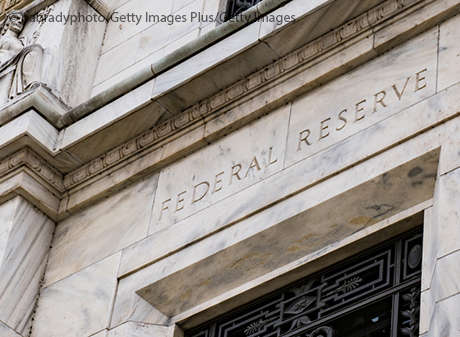How the Fed Has Responded to the COVID-19 Pandemic

The Federal Reserve’s (or Fed’s) mission is shaped by its mandate to promote maximum employment and stable prices for the American people, along with its responsibilities to promote stability of the financial system. So when the economy faces a crisis, as it has with the COVID-19 pandemic, the Fed takes forceful actions to minimize economic harm and set the stage for recovery when the worst is over.
The pandemic is causing tremendous human and economic hardship around the world. What kind of economic damage is it doing? Among other things, the COVID-19 crisis has triggered steep job losses and disrupted financial markets.
Understanding the Federal Reserve’s Actions in Response to COVID-19
The Fed’s actions in response to the COVID-19 shock can be grouped into three categories:
- Lowering the policy rate and keeping it low
- Stabilizing financial markets
- Supporting the flow of credit in the economy
#1 - Lowering the Policy Rate and Keeping it Low
First, the Fed’s monetary policymaking body—the Federal Open Market Committee (FOMC)—quickly lowered the target range for the federal funds rate. The federal funds rate, which serves as the FOMC’s policy interest rate, is the rate banks charge each other for overnight loans. During two unscheduled meetings on March 3 and March 15, the FOMC voted to reduce the target range for the federal funds rate by a total of 1½ percentage points, dropping it to near zero. The graph below shows the rapid decline.
In addition, starting with its March 15 statement, the FOMC has indicated that it expects to keep the policy rate at that level until the economy has weathered recent events and is on track to meet the Fed’s dual mandate. Movements in the policy rate influence other interest rates in the economy, such as those for home and car loans.
These steps have helped make borrowing costs low for households and businesses at a critical time. They are also intended to spur spending and investment when the economy emerges from the depths of the crisis.
The Fed Reduced Its Policy Rate to Near Zero
NOTES: This graph shows the federal funds rate, which has been near zero since mid-March in response to the pandemic.
#2 - Stabilizing Financial Markets
Second, the Fed took a number of steps to unfreeze key financial markets and to help them run smoothly. For example, trading conditions in the market for U.S. Treasury securities, which is critical to the overall functioning of the financial system, showed severe strains in early and mid-March. In other words, the prices of these securities were very volatile and it was difficult for sellers to find sufficient buyers. (For more discussion of these conditions, see the Fed’s May 2020 Financial Stability Report and a July 2020 speech by Lorie Logan, an executive vice president at the New York Fed.)
The blue shaded region of the graph below shows how quickly the Fed ramped up its purchases of Treasury securities—it bought around $1.7 trillion worth between mid-March and the end of June. The Fed also increased its purchases of mortgage-backed securities, as shown in green.
In general, the Fed’s purchases of securities keep markets working when assets are otherwise difficult to sell. The purchases also inject cash into the economy, and convey to the public that the Fed stands ready to backstop important parts of the financial system.
The Fed Increased Its Holdings of U.S. Government Securities
NOTES: This graph shows that the Fed’s holdings of assets, including U.S. Treasury securities and mortgage-backed securities, have increased since mid-March. The Fed has bought more of these securities to help these key markets function smoothly.
#3 – Supporting the Flow of Credit in the Economy
Third, to support the flow of credit to businesses, households and communities where it was not otherwise available, the Fed introduced several temporary lending and funding facilities. These facilities are formal financial assistance programs offered by the Fed to help eligible borrowers with funding needs. The Fed is authorized to use these lending—not spending—powers only in special circumstances and with the approval of the Treasury secretary.
You may have heard these kinds of emergency measures referred to as “13(3)” facilities. That’s because the Fed’s authority for these measures comes from Section 13(3) of the Federal Reserve Act.
Overall, the Fed has introduced multiple temporary facilities to support various types of funding and credit markets, as well as businesses of all sizes.
Two of the commonly discussed facilities are:
- The Paycheck Protection Program Liquidity Facility, established to help small businesses so they can keep their workers on the payroll; this facility supports the related Paycheck Protection Program created by the Coronavirus Aid, Relief, and Economic Security (CARES) Act and administered by the Small Business Association.
- The Main Street Lending Program (a set of five facilities), established to support lending to both small and midsized businesses and nonprofit organizations.
(For more information on all of the facilities, see the Fed’s Monetary Policy Report from June and Funding, Credit, Liquidity and Loan Facilities on the Board of Governors site.)
Setting the Stage for Economic Recovery
While primarily a health crisis, the COVID-19 pandemic has also significantly disrupted the U.S. economy and financial markets. In line with its mission, the Fed responded forcefully. During the initial several weeks of the crisis, the Fed used its interest rate policy to support the economy, took steps to stabilize financial markets, and introduced other measures to support the flow of credit to many sectors of the economy.
These actions help minimize harm to the economy and also set the stage for economic recovery when the public health crisis has sufficiently subsided.
Additional Resources
- Page One Economics: COVID-19’s Effects on the Economy and the Fed’s Response
- COVID-19 resources from the Federal Reserve’s Board of Governors and the Cleveland Fed (includes infographics)
- Remarks by Fed Chair Jerome Powell: “COVID-19 and the Economy” (a speech delivered April 9, 2020) and “Coronavirus and CARES Act” (testimony delivered before Congress on June 30, 2020)
- Information on the Federal Reserve Board’s procedures for emergency lending under Section 13(3) under the Federal Reserve Act
This blog explains everyday economics and the Fed, while also spotlighting St. Louis Fed people and programs. Views expressed are not necessarily those of the St. Louis Fed or Federal Reserve System.
Email Us




